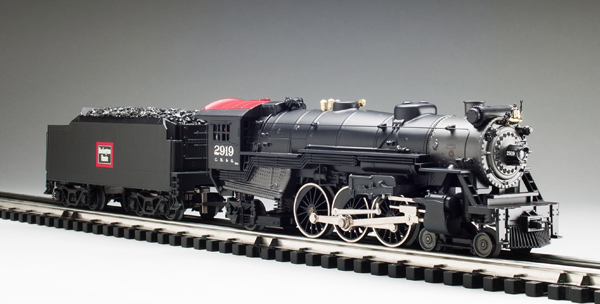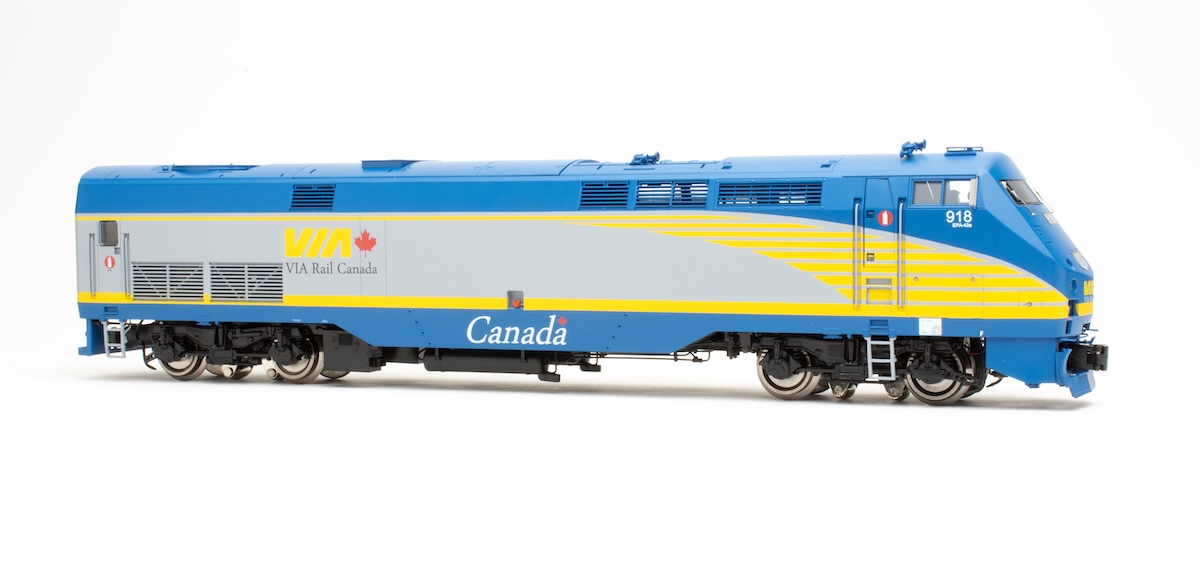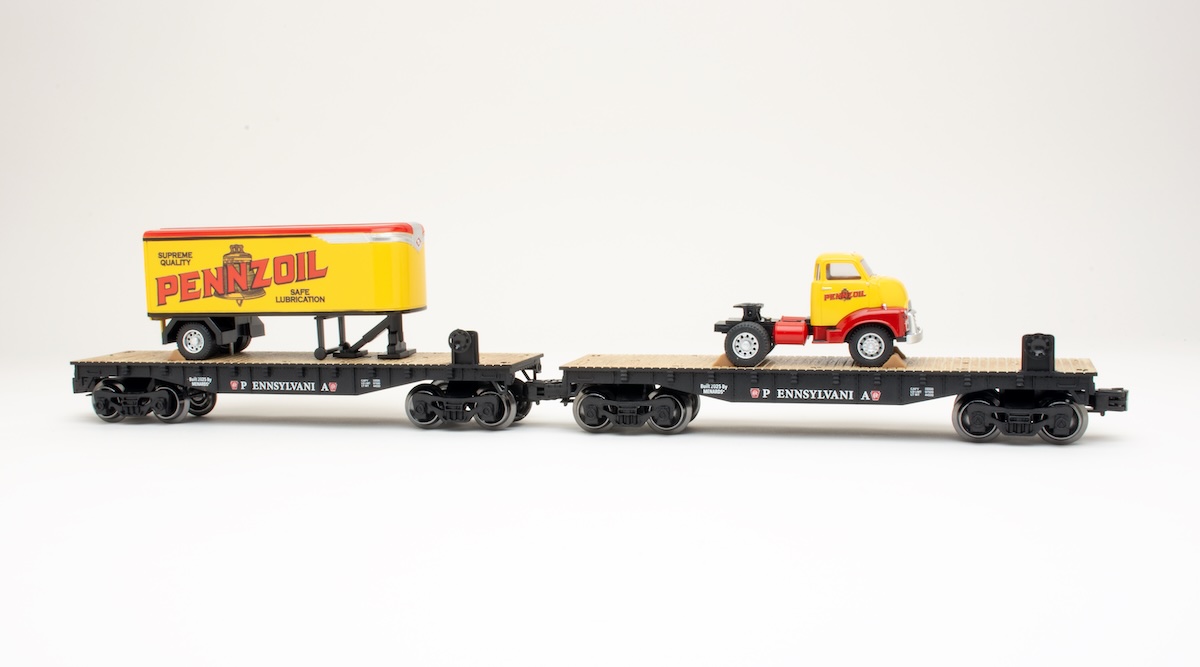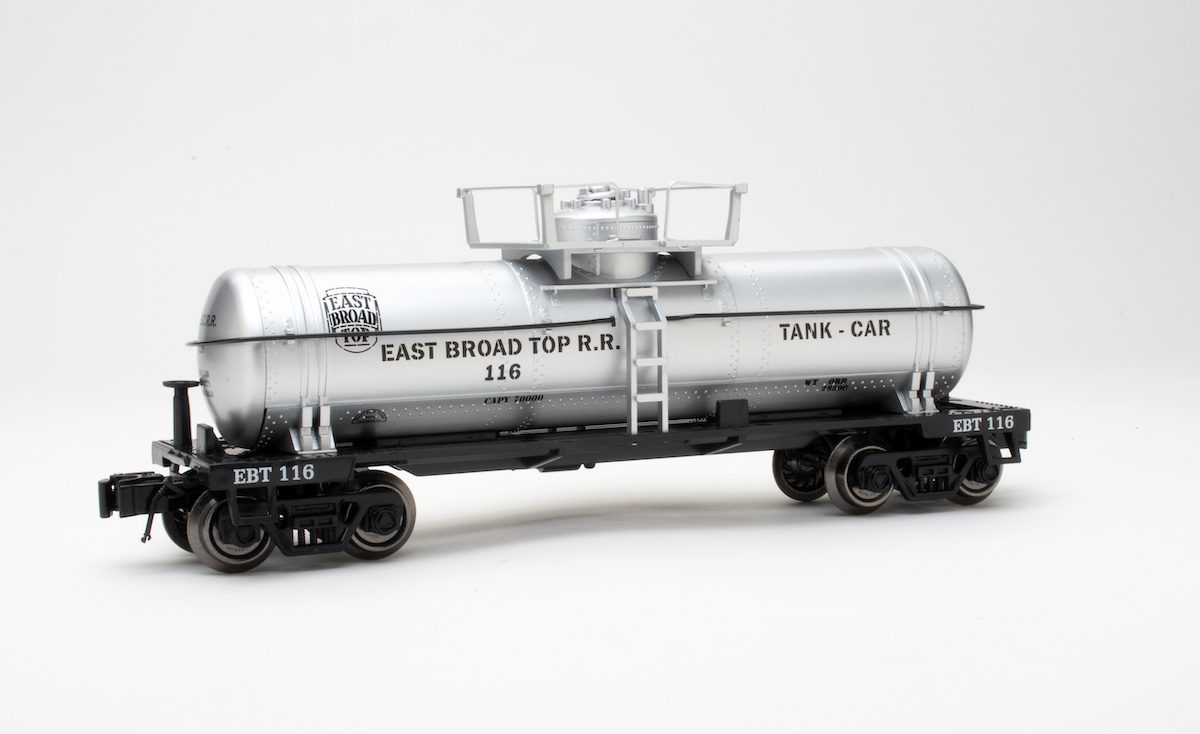Price: $449.95 (no. 30-1681-1) Min Curve: O-31 Cmd Low: 3.4 smph Cnv Low: 5.2 smph High: 61.4 smph Drawbar pull: 1 lb., 2 oz.
Features: Can-style motor, ProtoSound 3.0 command and sound system, smoke, coil couplers Current production road names: Alaska RR, Burlington Route, Great Northern, New York Central, Pennsylvania RR, Union Pacific
An early decision of the U.S. Railroad Administration (USRA) involved developing efficient and standardized steam locomotives that could be built and used by all the nation’s railroads. This avoided wasteful experimentation by the carriers while streamlining construction, thanks to standard designs that could be built more swiftly than a bevy of virtually custom-designed locomotives. The key elements were that all designs be modern (after all, they would have an operation life of 25 years), reliable, and safe for the crew.
The USRA made plans for 0-6-0 and 0-8-0 switchers, 2-6-6-2 and 2-8-8-2 Mallets, and both light and heavy versions of the 2-8-2, 2-10-2, 4-6-2, and 4-8-2 steamers. More than 1,800 were ordered and delivered to American railways.
As it is, the war ended four months after the first USRA engine, Baltimore & Ohio 2-8-2 no. 4500 (which may still be seen at the B&O Railroad Museum in Baltimore), was completed.
In operation some of the designs were better than others, but the soundness of many of the creations was a starting point from which railroads later developed their own versions.
Opening the box
The RailKing line USRA 4-6-2 by MTH is one of those products that gets it right in terms of fitting into either a postwar traditional layout or possessing enough detail to look at home on layout with modern scenery and rolling stock. The overall length of the steam engine is 20¼ inches (81 feet in O scale), it will look pretty good running with your postwar Lionel no. 2016 or no. 675.
The pilot has a solid “cow catcher” with cast-in rivet detailing. The simulated coupler is more of a symbolic nub, and the pilot has brakeman’s steps cast into the piece. Steps rise up to the running boards.
The smokebox has rivet, seam, hinge, and latch detailing. There is an add-on wire grab iron that curves along the bottom third of the smokebox.
The headlight is situated in the center of the smokebox. The classification/marker lights are affixed to the topside and bracket the centrally placed bell. Behind the bell is an Elesco feedwater heater. (Elesco heaters were not standard to the USRA design.)
The boiler has nicely defined rivets behind the smokebox and boiler bands that hug the boiler back to the cab. Cast-in sand lines flow down from the sand dome, and add-on grab irons run the length of the boiler. Behind the steam dome are add-on gold tone pop-off valves and a whistle. There is a turbine situated just ahead of the cab.
Below the running boards you’ll find the usual tubing, tanks, and mechanical parts cast into the frame. I’m always impressed with the countless rivets added to locomotive fireboxes. To me, this adds a wrench-turning detail, but it captures the spirit of the concept of big hulking things that create fire to boil water and make steam that will be used for locomotion.
The running gear is a nice rendition made of natural colored metal (not chemically darkened).
The cab looks terrific, and the rooftop is painted red in the style of the Chicago, Burlington & Quincy. The cab windows have cast frames and no glass. The interior has a detailed backhead with round gauges whose faces come painted white. There are also engineer and fireman figures seated at their duty stations.
The locomotive uses MTH’s wireless drawbar and operates on O-31 curves, which should please many tight-radius operators. Running on O-31 requires a bit of room between the engine cab and the tender for making it through that tight a curve. The gap between the cab deck and the deck of the tender is about 1½ inches, not terrible yet noticeable. I’m a half-full-glass guy, so I’m happy with it.
The tender has a large coal bunker with rivet detail on the body. You’ll find wire grab irons on each corner. The coal load is detailed, and the trucks have chains connecting them with the tender body.
The rear mounts a coil coupler for remote operation, along with a ladder running up the rear of the tank. The deck has a cast-in hatch for water and what look like two round drains to funnel spillage into the reservoir.
I could spot no imperfections in the paint. The smokebox and firebox are gray, while the body is a satin black. The red rooftop and red/black/white Burlington Route shield are perfect. The cab number and cab-side lettering “C. B. & Q.” are clean and crisp.
On the test track
The RailKing 4-6-2 locomotive functioned fairly well in conventional and command modes. It was run with the phone app, the DCS controller, and in conventional mode.
There was a bit of a glitch in the sound system. When powered up, the typical stationary chuffing kicked in. Whether stationary or in motion, however, the sounds stayed the same. This was true in conventional and command modes.
I had not experienced this before (modern O gauge sound systems generally work … or they don’t). So I cleared the locomotive from the system three times, but the result was the same. In case the problem might be an iffy connection between the tender and locomotive, I re-seated the wireless tether, but that didn’t seem to make a difference.
So I would rate this as a one-off problem that a trip to my local MTH retailer could resolve. Remember, if you’re going to buy a locomotive, you may be in a hurry to get it home but a few minutes on the dealer’s test track is always a good investment.
Smoke output was decent, the bell and whistle were good, and the rear coupler opened on command. Rolling down the track showed off the moving side rods, which illustrates why steam power is so much more dramatic than diesel power!
The MTH RailKing USRA Pacific is an excellent model sure to look better than most of your postwar power. Even better, it will fit in with a traditionally sized rolling stock fleet.















This is a great reason to buy from a local MTH retailer …